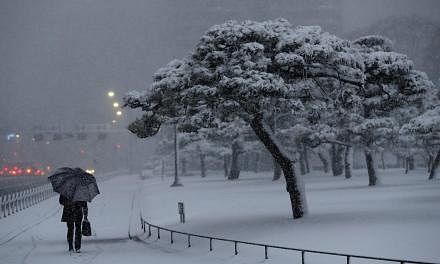The present weak La Nina weather pattern in the Pacific Ocean is likely to last for a few more months before petering out in the Northern Hemisphere spring, the US National Weather Service's Climate Prediction Center said on Thursday (Jan 11) in its latest update.
La Nina is a cooling of sea surface temperatures in the eastern and central Pacific. In general, this triggers wetter weather in South-East Asia and parts of Australia. It is the opposite of El Nino, which can bring warmer weather, reduced rainfall and even drought to the same regions.
The Climate Prediction Center said La Nina continued during the past month, with below-average sea surface temperatures across the central and eastern equatorial Pacific Ocean. There was less cloudiness in the east and enhanced cloudiness, or convection, to the north of Indonesia, it said, adding it saw an 85 to 95 per cent chance of La Nina persisting through the Northern Hemisphere winter before conditions return to neutral in the spring.
Japan's weather bureau said on Thursday it forecast a 70 per cent chance of La Nina lasting into spring.
Singapore normally experiences wetter and cooler conditions during La Nina events, especially during the Southwest Monsoon period (June - September), including October, the Meteorological Service of Singapore said in its most recent El Nino/La Nina update.
Outside this season, for example during the Northeast Monsoon (December to early March), the impact on rainfall from La Niña was less pronounced, MSS said.
Australia's Bureau of Meteorology said in its most recent update: "La Nina typically brings above average rainfall to eastern Australia during summer, particularly in northern New South Wales and Queensland. However, with a weak event expected, this typically means less influence on Australian rainfall."















